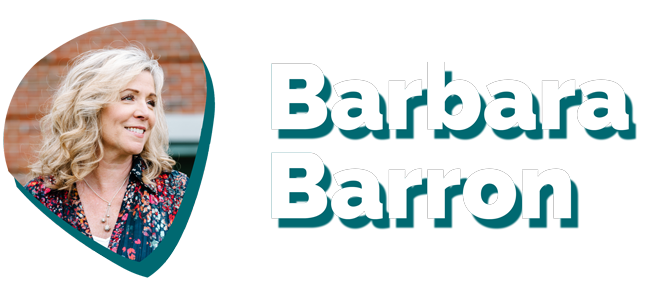November 16th, 2021 by Barbara Barron
As I progress as an advancement consultant, I am becoming more familiar with engagements that end. Or need to.
Most are because the project for which I’ve been retained has happily and successfully concluded. The goals were met and the organization is better for the work. The school has expanded its capacity to do what it does really well and is better able to fully deliver on the promise of its mission. The staff and volunteers have also expanded their capacity. Those are my favorite endings. But even they have a smidge of bittersweetness. But as I say goodbye, that sip of celebratory champagne is delicious!
Other engagements end because there is an internal change of staff and occasionally, of leadership. These are harder because the change creates a level of chaos that slows or even derails the project for a time. But it happens. Nobody stays in a job forever. And it’s rare to do so simply because a fundraising project is in the works.
But the ending of engagements that are the hardest for me are the ones that I choose to end.
This has only happened a few times. But in each case, it was painful. And since what I have learned as the consultant may be of use to my readers – who, for the most part, are not consultants, but are the Heads of School, Board members, and professional staff – I share it here so that you might be better equipped to select, retain, and, when needed, release a consultant in the future.

For starters, we ask ourselves, “What makes a great engagement?”
Here are the factors that I find lead to success:
1. A realistic goal, timeframe, and budget for the work
2. Staff dedicated to working directly, even daily, with the consultant
3. Clear expectations for both the client and consultant
4. Honest, regular communication
5. A willingness to follow counsel’s advice
When those five (minimally) factors are not consistently in place, trouble inevitably follows.
In each engagement, everyone starts out on their best behavior. After all, a need is being met with my hire. Support is at hand. Success feels more likely. Woot! Then real life happens. Meetings get postponed. Not everyone shows up ready to work or has completed the tasks they agreed to. A critical break occurs in the communication chain. There is “project creep”, so the initial goal and timeline get pressed. None of these is good.
But the failing that most often sinks the ship is this: not following my counsel. And I mean precisely.
A few examples.
The trustee who went through the training I provided for how to make an effective, even inspired solicitation decides, on his own and in the 11th hour, not to ask for the agreed-upon gift amount. Guess what: the gift is half what it could have been.
The Head of School allows her calendar to become so full she has no time to sit with the promising new families to get to know them and engage them early. Guess what: those new parents go ahead and self-select a nominal gift amount or never give that first critical year because they don’t fully appreciate the ways they could be transformational to the school.
Against pressure from parent volunteers, the advancement staff acquiesces to reverting to the outdated but familiar event that saps the energy of the staff, upstages the far more important major donor gathering, and leaves everyone exhausted and disgruntled.
No professional staff is included in a donor meeting so there is no one present and tasked with handling the follow up. No notes are available for the database, no plan is in place to contact the donor about the next steps.
“Barbara, you can’t expect everyone to do exactly as you say, though.”
Yes, I know. There are always going to compromises. But there is a reason we call certain actions “best practices”. It is because others before us showed us the way, isn’t it? And just like any new skill, it takes time and practice to get it right. Soccer players run drills. Pianists practice scales. Why? To build muscle memory, to get the skills deeply embedded in our brains. Malcolm Gladwell writes of the 10,000 hours to proficiency. So when we skip over important steps in the process, when we freelance our way through something as important as a major gift solicitation, we are playing fast and loose with something potentially transformational, for the school and – sadly – for the donor.
Have you subscribed to the newsletter yet? It only takes a minute.
As your consultant, I freely admit that I don’t know everything. But what I do know, from lots of experience, is that my way usually works. If you don’t actually try it that way, how will you ever know?
After you get your 10,000 hours behind you, then go off-script. But I suspect you won’t because by then you will know that the best way is the way you were trained.
Great engagements lead to success for the school. That’s the whole point, right? To build something better. To improve the organization so the vital work that goes on in the classroom can flourish. As I am known to say: “our advancement programs should endeavor to be as good as our very best educational programs.”
A good consultant can help get you there. But only if you follow their advice.
So when I see a school start to drift away from that early best behavior and the above five factors are not firmly in place to guide the work, it’s time for a re-set. And that’s on me – as the consultant – to call. And often, it works. I remind everyone (or just the offending ones) of the reason we’re working together, what’s at stake, and where I see a needed course correction. But after a reset or two, if these bad habits persist, that’s the moment of reckoning for me. Remember I just wrote that the whole point is to have the school build something better. If I can’t be effective in ensuring that my consultancy will enable that, I need to bow out. I can no longer accept payment for my services when they are not making a difference and when my advice is ignored.
My smart husband has a favorite cautionary expression: “yellow lights always turn red”. Ignoring it and hoping it will change is not a winning strategy.
When a school hires an advancement consultant, it is making an investment of precious tuition and gift dollars. A significant one when the project is a high-stakes capital campaign. It must be worthwhile. As a consultant, I need to be able to point to concrete successes. It does me no good to continue to consult with a school that is not advancing – even if I love and appreciate everyone at that school.
If I stick around with clients that don’t heed my advice, how can I ever prove my worth to future clients?
Plus, how would I sleep at night?
The saying goes that “we get what we pay for.” To use a line from Thelma and Louise: “You get what you settle for.” Let’s do better. Let’s engage in the work we are blessed to do. Let’s be “all in.”
Or, let’s wish each other all the best and move on!
Stay well,
Barbara Barron

[email protected] // @BBAdvancement
My name is Barbara Barron, and I’m writing this blog to share advice on a profession that I adore.
I’ve been working in the field of Independent School Advancement for over 20 years. In that time, I’ve had the pleasure of creating and implementing successful fundraising plans and programs for so many incredible schools. I’ve had the privilege of seeing real growth at The Carey School, Marin Primary & Middle School, Woodside Priory, Crystal Springs, Presidio Knolls, Sage Ridge, and San Diego French American, and others. (Maybe we’ve met!)
Nothing makes me happier than seeing a struggling school start to thrive. My hope is that you’re here to make a positive change as well. I hope my advice can be a part of that change.
Shoot me an e-mail if you want to swap tips, or share your voice here.
Let’s do this, together.







